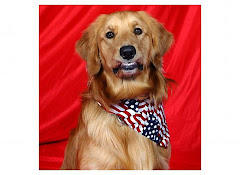Garlic.....friend or foe?
After doing a good deal of research on the subject, I will share with you what I found.
Obviously, there is a great deal of contradictory information on whether garlic is good or bad for dogs. Some people advise that garlic is toxic to dogs and can cause anemia, bleeding, and even death. Others swear by garlic as a healthy supplement and flea repellent for dogs.
Let's look at the facts.
Garlic is a member of the onion family and is high is sulpher. Onions and garlic contain a compound called thiosulphate. In extremely high levels, thiosulphate can be a dangerous toxin that can cause hemolyctic anemia in dogs. Onions are highly toxic to dogs due to the relatively high concentration of theiosulphate. Garlic also contains this compound, but but in very limited quantities compared to onions.
Ingestion of large quantities of thiosulphate can cause Heinz-body (hemolytic) anemia resulting from oxidative damage to red blood cells. When red blood cells are destroyed, the body becomes oxygen-deprived and life-threatening conditions can develop rapidly.
Symptoms of hemolytic anemia include:
- Weakness/lethargy
- Discolored Urine
- Pale or white gums
- Rapid breathing
- Vomiting
- Diarrhea
Veterinarians at the Wesley Chapel Veterinary Hospital in Florida claim that raw or cooked onions, onion powder, shallots, garlic or garlic powder all contain a substance that causes destruction of red blood cells resulting in potentially life-threatening anemia.
All that being said, are there benefits to using garlic, and how much is safe?
For healthy, adult dogs, the small amount of garlic in commercial foods and treats has not been shown to cause problems. The exact amount of a toxic dose is unknown, and depends on the size and health of the dog as well.
When used in moderation, garlic seems to be a healthy supplement. According to Charlie Fox, the co-author of The Garlic Cure (McCleery & Sons, 2002), garlic can be used to stimulate and support immune function, trigger gastric juices for better digestion, encourage the growth of friendly bacteria, and prevent infections. He claims to have seen garlic reduce the risk of cardiovascular disease and cancer as well as improve blood sugar regulation and promote detoxification.
Dr. Richard Pitcairn, probably the preeminent authority on natural pet care and providing home made food for dogs and cats lists garlic as an acceptable ingredient. He states "Garlic helps eliminate worms, strengthen digestion, and beneficially stimulate the intestinal tract. Use it to promote intestinal health. It is also indicated for animals that have been on a high meat or fish diet, and those that tend to be overweight or suffer from arthritis or dysplasia. Include fresh, grated garlic with each meal, using 1/2-3 cloves, depending on the animal's size. Cats can be given 1/2 clove a day".
Dr. Pitcairn has been providing home made recipes and natural remedies to address health issues in pets for over 27 years. This quote is from his most recent book in its third addition.
Natural-dog-health-remedies.com claims that garlic boosts immunities, fights infection, enhances liver function, lowers blood fats, and repels ticks and fleas.
Aleda M. Cheng, DVM CVA of medhelp.org uses garlic in canine cancer patients as a secondary treatment to traditional or holistic/herbal chemotherapy treatments. She feels that small amounts as an anti-cancer supplement outweigh any possible adverse effects, but also confirms that large doses can cause anemia.
Wolves have been known to eat homeopathic remedies such as wild garlic to keep away parasites, and willow bark to help with aches and pains.
It seems that the key here is the amount of garlic consumed. As stated earlier, small amounts seem to provide numerous health benefits to dogs. Large amounts of garlic do have the potential to be toxic, even deadly, to pets. Onions contain much more of the toxic compound and should be avoided completely.
Pet owners who want to give their dog garlic (besides what may be in their commercial diet or treats) should discuss dosage amounts with their vet and whether the benefits are worth any possible risks. As pet owners, we need to be aware of any dangers and keep an eye on the health of our pets. Your pet may experience health benefits from garlic as stated in the comments above.
Personally, I don't add any garlic to the home made "stew" that I make for my guys, but I DO make them cheddar/garlic treats that have a small amount of garlic powder in them (approximately 1 or 2 teaspoons to a large batch of dough). I have yet to see any problems with anything I have fed them.
My recommendation is, as always, talk to your vet, do your own additional research, weigh your options carefully, then do what you think is best for your pet. I have provided facts from both sides of the fence here, and I hope it is helpful in making your decision.
















































